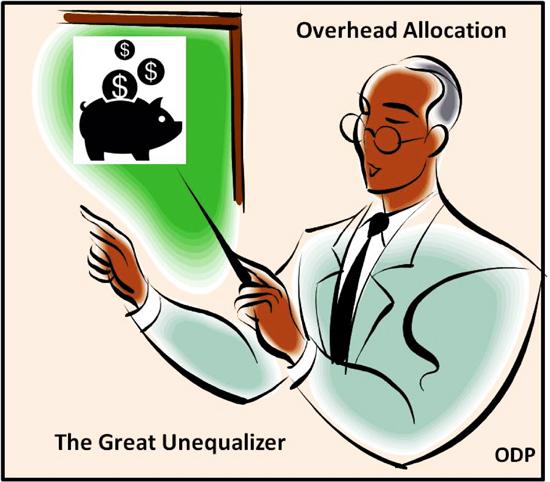Back around 1996 I had three businesses on what was called the World Wide Web at that time. I had no competition for what I was providing. When I first posted my sites, there were around five million web sites and every year you could buy what was at that time the White pages of the Web that listed all the existing Web sites. It had cost $100 US and it got published once a year. Once there were around 10 million sites you could no longer get it as it was quickly becoming too unwieldy to maintain.
Now at that same time two friends got together and put their fishing supply catalogue on the Web and sold their products at one cent below wholesale and their thinking was that they would put their competition out of business. Needless to say, they went out of business and the sad part was that their banker thought that they had a great business plan. To compound the injury the shipping costs on orders were free for the customer. Now read this last paragraph again. It is a good case study.
So, it was the overhead that brought them down. They were not recouping their own costs thinking that they would outlast and outsell the other fishing supply catalogues that were on the Web and there were not that many at the time.
Overhead is what I call the Great Unequalizer of any business venture when it goes head to head against the competition. No matter what the state of the micro economy is in your community or what the state of the macro economy of your country is, there are three universal truths: Some businesses make money. Some businesses break even. And some businesses lose money.
Manufacturing and fabrication companies, regardless of how many employees they have, are all chasing a piece of the economic pie that their products cover. Very few can be everything to all customers and so each tends to specialise in a few of the various customer bases and compete for that business with other similar manufacturers.
For example, if your primary customers are in the mining industry, then you probably have a share of the mining industry market illustrated by Figure #1. It is rare for any business to be the one and only supplier of manufactured products for any industrial sector.
Figure #1: Your business competes for a part of the contracts available in your area of expertise.
One problem all companies have to struggle with is how to calculate the price of their services which will let them be competitive in terms of cost but still allow them to turn a profit. And this is what the two friends who started the Web based fishing supply catalogue failed to understand.
Yes, the main purpose of trying to be competitive is to take market share away from your competition. After all, your sales people will be calling on customers at the same time as their rivals will be doing it. But there are two separate variables for you to consider. The first is how much of the market you have an economic piece of. The second is how big of a percentage of each of your customer’s own total supply purchasing budget that you have a piece of. (Figure #2)
Your team needs to consider both. This is why calculating your own overhead cost is so critical to the success of your enterprise.
Figure #2: The two factors that determine what your business needs to focus on are not mutually exclusive.
Everything about a manufacturing operation, and I mean everything, has to be added up to come up with a total monthly overhead cost of the business. These include and of course are not limited to: building maintenance costs; furniture; grounds keeping costs; heating costs; insurance costs; internet costs; janitorial costs; lunch room supplies; office supplies; power; rent; safety equipment; security costs; storage racks; telephone service; toilet paper; ventilation costs; water & sewer costs.
The complete overhead list is of course much bigger than this and too many companies group the various items together into a generic miscellaneous category to simplify their accounting. But when they do this it opens the doors to wastage and even employee pilfering. I’ve worked at companies where employees would take toilet paper and paper towels home as they knew no one was keeping track. It’s the little things that add up that can make a company go under if money is tight.
Another area where building operations lose money is by incorrectly determining the price to charge for their services. To explain this let’s work through an example.
Let’s set our scene. We have a 1,500m2 building that has various types of manufacturing equipment set up as work stations. Each of these stations take up a certain foot print and each individual area needs to have its own portion of the entire business overhead allocated to it.
Our company building with 2 work centres identified for our example. The centres are 200m2 and 300m2 respectively. We will label them ‘X’ and ‘Y’.
The Machine Rate Method
We will do our calculations for overhead allocation by what is known as the Machine Rate Method. (Figure #4) We will assume that all the work has been done to figure out what the monthly overhead of our building is and in this case, it works out to $100,000/month. Since our building is 1,500m2, the overhead works out to $100,000 ÷ 1,500 which is $67/m2
The next thing we have to determine is how many hours the building is in service every month, and the average is, of course, 30 days x 24 hours. The building is there days in and days out.
We also can then determine that since there are approximately 720 hours in a month then the hourly building overhead allocation by the hour is $100,000 ÷ 720 which is $138/hour.
But we need to do more work to determine the actual overhead of each manufacturing centre. The overhead of each centre will actually be different. There may be different operating costs because of the following variables: different clean-up costs at shift end; different electrical costs; different operator pay scales; different tooling setup costs; special lubrication costs; special tooling costs.
Centre ‘X’ is $30,000/month so its overhead is $30,000 ÷ 200 square metres which is $150/m2. Centre ‘Y’ is $40,000/month so its overhead is $40,000 ÷ 300 m2 which is $133/m2.
We add each of these to the building overhead per square foot of $67/m2 and multiply by the foot print of each centre. We take this new total for each station and multiply by the foot print for each and get $43,333 for centre ‘X’ and $60,000 for centre ‘Y’.
In our sheet we can see that centre ‘X’ works 600 hours a month so $43,333 ÷ 600 means that the overhead charge should be $72/hour. For centre ‘Y’ we have $60,000 ÷ 300 hours a month so the overhead charge is $200/hour.
We now have a pretty good idea as to what we should charge for any work coming out of these two stations. Now we can also add our raw material costs, production volumes, scrap production and profit margin that we want by the hour. Plus anything else we may need to add.
But we are not done yet. We can take it one step farther. Unless we run our business 24/7 out of the building, the actual operating hours of each station will be less than the actual 720 hours available in a month. So now we can do a simple ratio of hours to multiply against our calculated overhead for each centre.
Simplified spreadsheet used to determine the actual overhead cost of each machine centre so that we can determine what to charge per hour for each station.
So, for Centre ‘X’ we get $72 vs. $87 per hour and for centre ‘Y’ we get $200 vs. $480 per hour.
This is a much more accurate approximation of what we should be charging for work coming out of each station to maximize our profits. And 90 percent of your competition will not be doing this.
Summary
Too many manufacturers and fabricators charge the same amount per hour for their work no matter where or how it was made in their building. Since as you know there can be a large variety of different types of actual equipment and respective support systems for each, their costs are not the same to operate.
What I have tried to do in our example is to show you that you have various accounting options to use to try and figure out the true cost of your product. In our example of centre ‘Y’, our true calculated overhead cost went from $200/hour to $480/hour. If you charge this amount you will be breaking even on the real cost of operation of this centre. You simply divide this by the production rate coming out of it.
But do you need to charge this amount? It all depends on what the product is and how much competition you face out in the world for the same product. Maybe you will decide to run one centre at a loss to keep one customer and charge more for a second customer.
But most companies simply blend their costs together for a number of stations. It is easier to do.
And remember what we first said. Some businesses make money. Some businesses break even. And some businesses lose money. Overhead allocation is the Great Unequaliser.
But at least now you have a better idea as to how to recover your basic overhead costs as they pertain to each square metre of your operation. Not all accountants are created equal when it comes to knowledge on how you should be charging out your work and quite frankly, that is not their job. Most simply take all your bills and invoices and put them into a giant mixer that spits out the amount that you can keep and the amount that you have to pay in taxes.
People like me write articles like this to give as many people as possible a fighting chance to not only make money, but to stay in business while your competition goes under. That may sound callous and cruel but who would you rather went under? You or the other guy?
_________
Orest Protch is currently working at a remote oil camp in Canada and takes the company charter plane from his city to the camp runway on a week-in, week-out basis. His background extends from metallurgy, NDT, foreman including in a foundry, steel mill and saw mill, working in research and process labs, statistical process & quality control, water treatment and wastewater treatment, power engineer, pulp mill, instructing and training, writing manuals, oil & gas, writing articles and welding.






